To hike: “to walk a long distance especially for pleasure or exercise: to suddenly increase the cost, amount, or level of (something)” merriam-webster
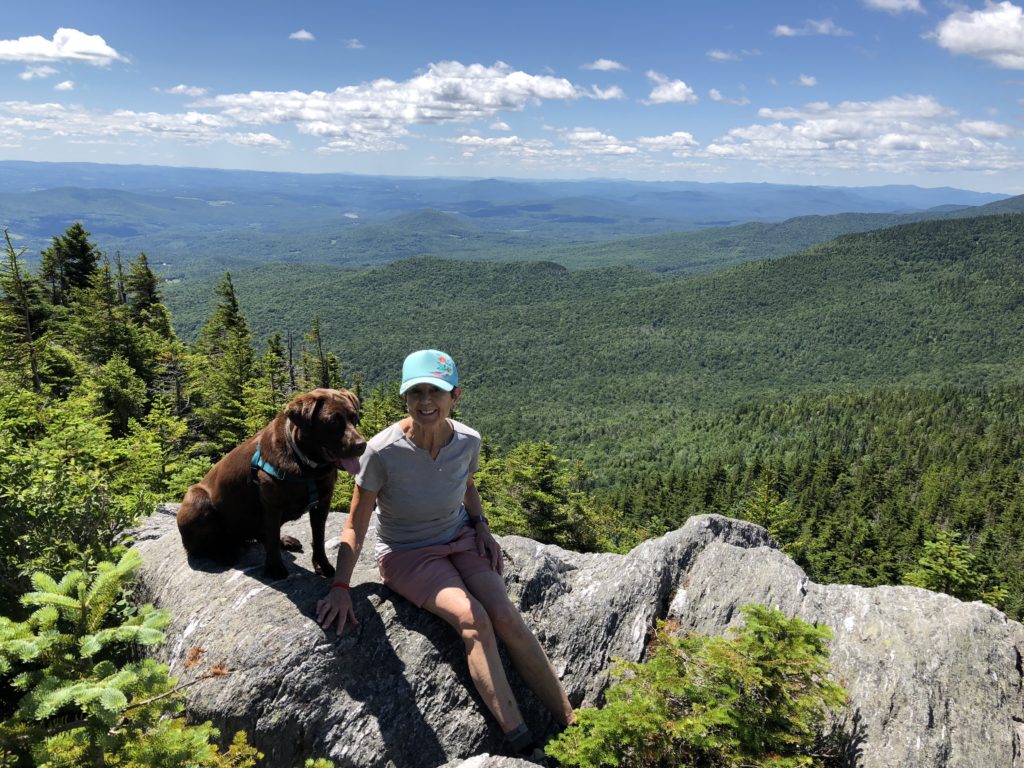
with Sophie on Mt. Worcester, Vermont 2018
UP-Perhaps it is because I live in Vermont, to me to hike means to go UP, i.e. “suddenly increase the … level.” I somehow associate the long slogs through wooded areas with trekking, or hitting the trail. I like to do both but I especially enjoy the challenge of climbing the rocky segments of a steep trail – as long as there are some good hand holds and I don’t look down! Interestingly, though I do gaze in awe at the view from the summit, that’s not what attracts me to the hike – it is time with my BFF, Sophie, my Chocolate Lab, and the process, the journey. Hiking is such a metaphor for life. And, as I add the years, I accept the slower pace, the digging deeper for strength and endurance, the need for focus and the attention to balance. In fact, I realize my personal hiking challenge is not fitness, it is footing. Again, such a metaphor for life!
SEQUENCE: Prepare-Up-Pause-Down-Recover-Repack
A hike begins weeks and months before it actually happens. (Rather, a successful and comfortable hike does.) All the elements of training for athletic endeavors apply to hiking as well. Deliberately enhancing fitness in all its aspects including nutrition over duration – not just packing an energy bar for the top – programs a better experience on first and subsequent hikes. (Here I write of day hikes since through hiking is an entirely different animal.)
Preparation also includes researching the trail, planning for emergencies and changeable weather conditions, putting into practice safety concepts (letting people know where you are going, when you anticipate returning), packing your pack. Note: cell phones are great but here in Vermont there is limited service. Find alternative apps, etc. And, please observe cell courtesies in the presence of others.
Up often includes a preliminary portion of the trail that is either through the woods or along a path leading to the climb. It is a good chance to warm up (and, if hiking with your dog, spend a few minutes with some “pay attention to me” on-leash reminders). It is a time to gather thoughts and energies for what lies ahead. I don’t know about you, but I find that if my mind wanders, I might also wander – maybe even off trail. I may slow down or become careless with my steps. Then there is the chatter. I talk to Sophie – a lot. When hiking with friends I am tempted to chatter away. Stop! I need to remind myself! Value the silence sometimes. FOCUS.
Pausing at the top is a must! 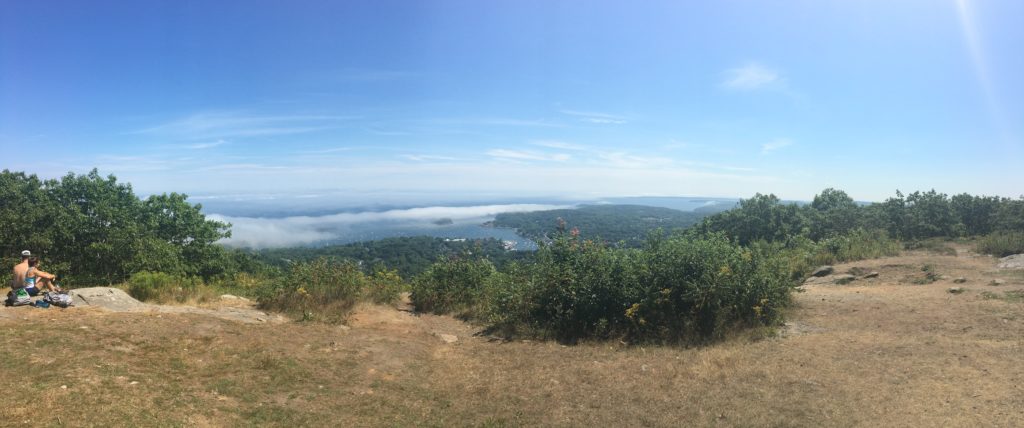 For many, this is the entire purpose of hiking. For others it is a perfect lunch break, rest or photo op. Note: if hiking with dogs or children, beware of fragile vegetation at the summit or potentially hazardous drop offs. Safety and consideration always rule.
For many, this is the entire purpose of hiking. For others it is a perfect lunch break, rest or photo op. Note: if hiking with dogs or children, beware of fragile vegetation at the summit or potentially hazardous drop offs. Safety and consideration always rule.
Down is my least favorite direction to travel. Roots, loose dirt or rocks, muddy or slick surfaces and sometimes huge steps are as much of a challenge to me as navigating a stream crossing. (I admitedly defer to descending purposely on my butt!) This is definitely not the time to relax and assume that the work is done.
Recovery is too often neglected. There is the immediate recovery of post hike refueling and rest at the bottom. Perhaps a change of clothes, especially foot wear, and a few stretches before getting into the car would be smart. Depending on the challenge of the hike, active rest the following day might be the ticket. Not to be underestimated, sharing the story of a hike, posting on FB, journaling or simply reviewing the experience is instructive, pleasurable and restorative.
Repack. Aha! Here’s the trick! First unpack and dry out anything damp or wet. Then either repack for your next adventure, lay out your necessities, or make a punch list for the next time based on what you may have needed or learned on your most recent trip. Remember those moments on the trail when you said “I wish I had …?” Now is your chance.

Sunset Ridge, Mt. Mansfield,Vermont
COURTESY-Yes, there are trail courtesies and, as with most good manners, they are all about consideration. Leave No Trace (essentially pack in/pack out, https://www.greenmountainclub.org/hiking/leave-no-trace/), greet other hikers pleasantly and step aside as the situation dictates (some feel the uphill hiker might chose to allow the downhill hiker to proceed while others feel one should always concede to the uphill hiker-so perhaps let the situation dictate is the better rule), offer assistance when called for and, of course, observe stewardship of the trail and surroundings.
GEAR-Oh, so much to say about gear! Choosing the right gear is very individual and usually based on experience and conditions. Hiking the more popular mountains in Vermont I am always astonished when I see folks leave the parking lot to head up wearing sandals or fashion tennis shoes and carrying – nothing. There is no need to reinvent the wheel on a packing list so please, if unsure, look for advice from those who have been there/done that. (The Green Mountain Club or the Appalachian Mountain Club are always good resources. For example: https://www.greenmountainclub.org/the-long-trail/trip-planning/) Note: some readers live in other areas of the country so, of course, utilize a local hiking resource. But if and when you visit Vermont ….
The basics are obvious: appropriate attire including several layers, one of which is waterproof, good shoes or boots (often personal preference here – I like trail runners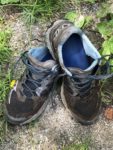 for the most part because I opt for traction and flexibility but my ankles sometimes call out for higher boots, etc), poles, and a pack. Note: when I hike the Whites or with my friends, I am the only one without poles. In the past I have cited my need to have hands free for Sophie. Now, with my new vest that easily snaps in folded poles, I have a pair on order. When I hike on easier day hikes in Vermont, I see many without poles. Good to have options! Oh, and BTW, Ultimate Direction now makes poles with 2 levels of handgrips that so easily address the dilemma of uphill and downhill https://ultimatedirection.com/fk-trekking-poles/.)
for the most part because I opt for traction and flexibility but my ankles sometimes call out for higher boots, etc), poles, and a pack. Note: when I hike the Whites or with my friends, I am the only one without poles. In the past I have cited my need to have hands free for Sophie. Now, with my new vest that easily snaps in folded poles, I have a pair on order. When I hike on easier day hikes in Vermont, I see many without poles. Good to have options! Oh, and BTW, Ultimate Direction now makes poles with 2 levels of handgrips that so easily address the dilemma of uphill and downhill https://ultimatedirection.com/fk-trekking-poles/.)
Speaking of Ultimate Direction, it is a company I have just discovered in my search for the perfect pack. I lug a lot of water on my hikes because of Sophie and those water bottles are both awkward and heavy. I bought a nice one from Orvis that includes a top for her to drink out of, but again it is awkward. (Hate it when I bend forward and the water bottles drop out and hit me on the head!) And, yes, I know, Sophie should carry her own – but I hate to interfere with her freedom to explore when it is ok for her to do so and I certainly don’t want to affect her balance when scrambling up or down steep rocks. Better me.
Now about that pack …
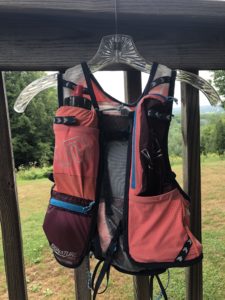
LOVE this vest from Ultimate Direction!
https://ultimatedirection.com/adventure-vesta-4-0/ While I understand that there are many excellent products for far less money, after having tried and returned several varieties, this is the one that works for me. (besides, I ordered from Amazon and had lots of extra Amazon dollars to put towards) I’ll let you click on the website for the details, but here’s what I carry comfortably and securely (summer hiking season): for Sophie, I fill the bladder, remove the hose and carry a soft folding bowl, treats and several edible nutritional bones for her lunch break; water for myself in the front bottle, electrolyte powder to add, energy bar and/or food, cell phone (hoorah – this is the only pack/vest I have found that accommodates iPhone8+ in front!), rain jacket, wind jacket, extra layer if needed, gloves if needed, head lamp (needed or not), wallet, whistle, map, ibuprofen, bandaids, dry socks, sunglasses, sunscreen, insect repellent, and the kitchen sink. Just kidding. I can snug down the pockets and snug up the fit so this vest, parts of which are water repellent, is like a second skin and carried higher on the back which prevents lumbar fatigue and protects balance. Yeah, I know, this vest is designed for women ultra distance trail runners. But hey, if it works for them, surely it works for me.
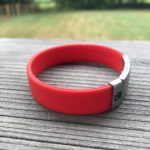 I always wear a baseball cap and my RoadID bracelet with emergency contact info; states that I am hiking with my dog just in case…and Sophie’s collar sports her name and a phone #)
I always wear a baseball cap and my RoadID bracelet with emergency contact info; states that I am hiking with my dog just in case…and Sophie’s collar sports her name and a phone #)
TRAILHEAD-The trailhead is the beginning and the end of an out-and-back or loop day hike.
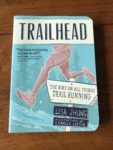
useful resource for running or hiking
It marks both anticipation and accomplishment. Adventure begins here; memories are saved. A day alone or with friends, physical exertion, exhilarating views, woods, wildlife, time, and then well-earned fatigue are all to be had for a hike. Won’t you plan to visit a trailhead soon?
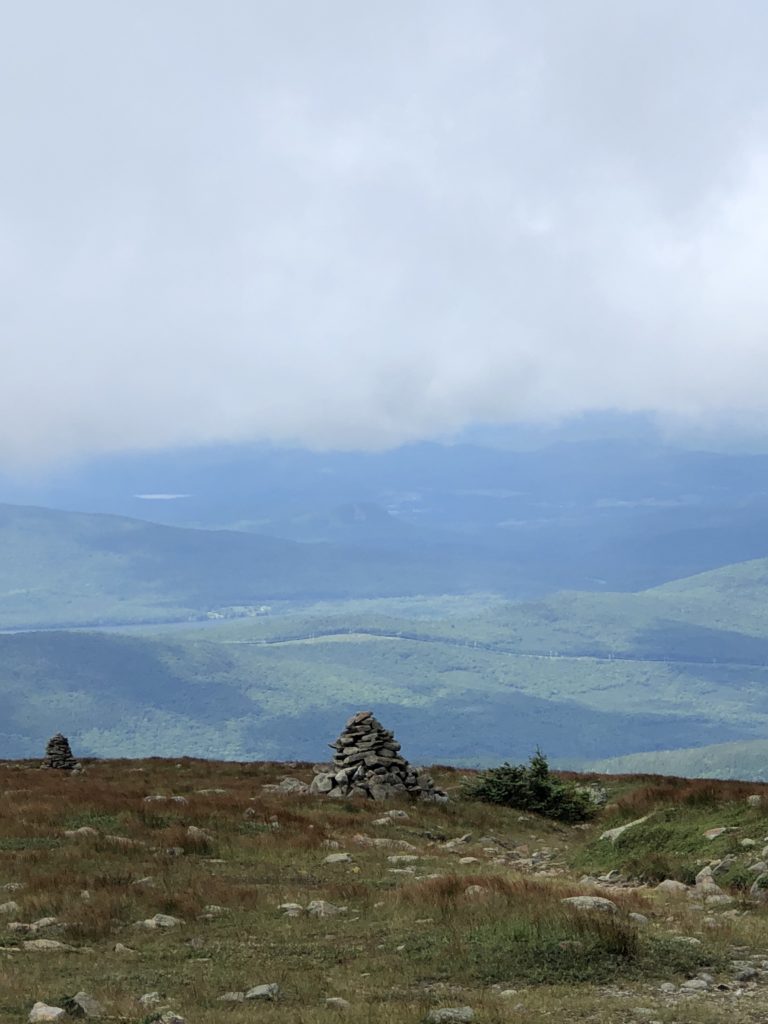
The Whites – New Hampshire – Mt. Moosilauke, 2018
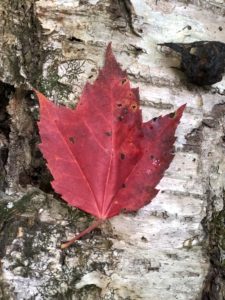
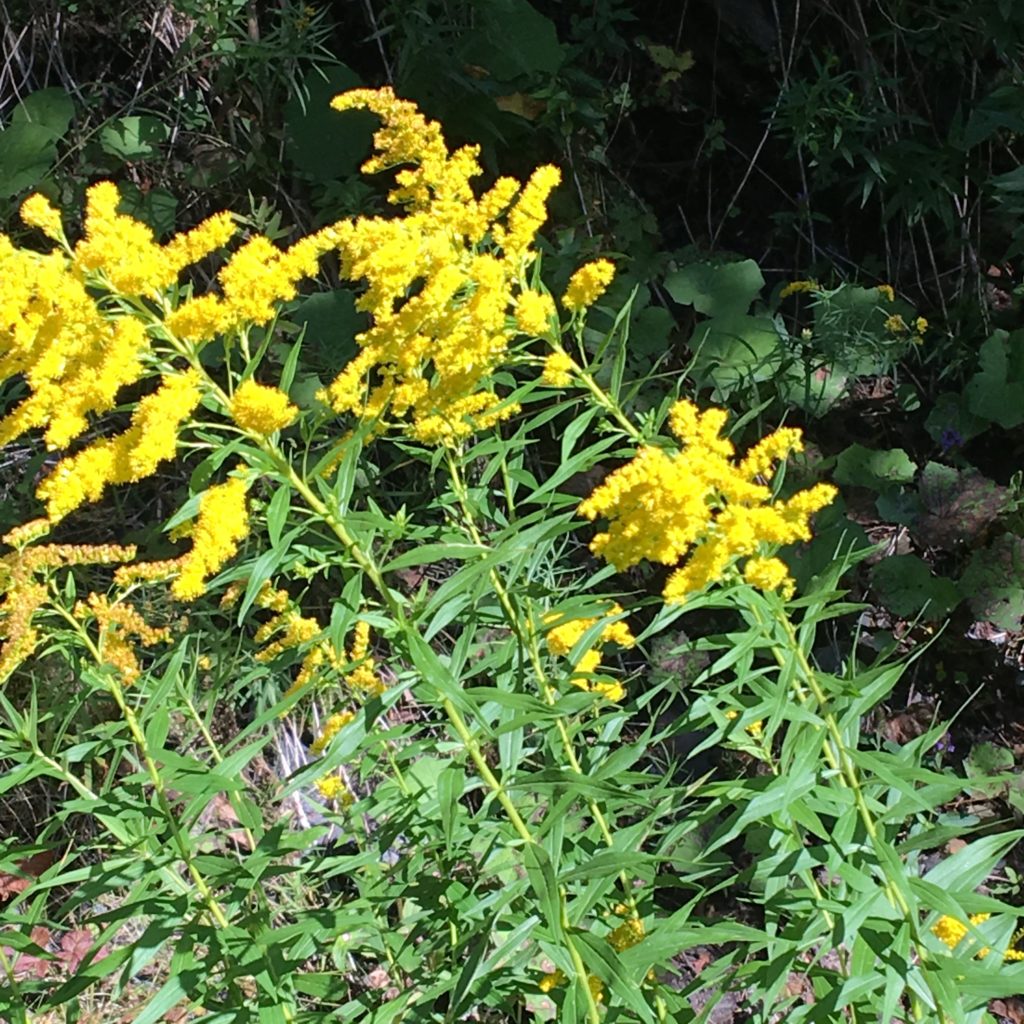

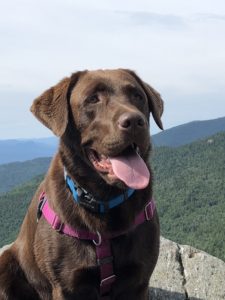 I love to hike and explore in Vermont and New Hampshire with my Chocolate Lab, Sophie. Our day hikes take us from meandering, wooded brook-side trails to rock face and astonishing summit views. Sophie, not quite 2, loves these adventures and is responsible for my new passion – hiking.
I love to hike and explore in Vermont and New Hampshire with my Chocolate Lab, Sophie. Our day hikes take us from meandering, wooded brook-side trails to rock face and astonishing summit views. Sophie, not quite 2, loves these adventures and is responsible for my new passion – hiking.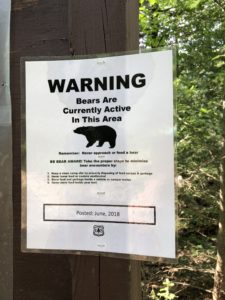 Perhaps what is significant here is that I know there ARE bears in the woods and on the trails. How do I know this? No, I have not met one – yet. I have seen a bear on my husband’s game camera set up on a trail I use frequently. I have stepped over bear scat and I have read blog posts, seen tv news reports, stopped to read signs posted at State Park entrances, and heard anecdotal accounts of bear sightings, often corroborated by cell phone pics.
Perhaps what is significant here is that I know there ARE bears in the woods and on the trails. How do I know this? No, I have not met one – yet. I have seen a bear on my husband’s game camera set up on a trail I use frequently. I have stepped over bear scat and I have read blog posts, seen tv news reports, stopped to read signs posted at State Park entrances, and heard anecdotal accounts of bear sightings, often corroborated by cell phone pics.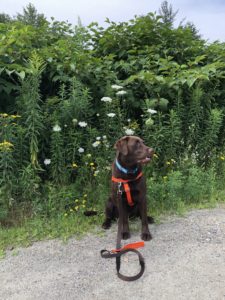 For those of us who hike with dogs, there is an extra layer of prevention and protection for which we, the human companions, need take responsibility. I would hope that my dog would sense the presence of a bear long before I would and would alert me. I would fervently hope that my dog would not notice cubs and, thinking they are other pups to be greeted and played with, go do so. (Labs are oh so friendly with other dogs, aren’t they?). Disaster would ensue.
For those of us who hike with dogs, there is an extra layer of prevention and protection for which we, the human companions, need take responsibility. I would hope that my dog would sense the presence of a bear long before I would and would alert me. I would fervently hope that my dog would not notice cubs and, thinking they are other pups to be greeted and played with, go do so. (Labs are oh so friendly with other dogs, aren’t they?). Disaster would ensue. WILDLIFE – Green Mountian Club August 2, 2018 Black Bears–Bears have become more active around Long Trail campsites and trails in the last few years. In areas with posted bear warnings, please follow a few basic steps:
WILDLIFE – Green Mountian Club August 2, 2018 Black Bears–Bears have become more active around Long Trail campsites and trails in the last few years. In areas with posted bear warnings, please follow a few basic steps:
 For many, this is the entire purpose of hiking. For others it is a perfect lunch break, rest or photo op. Note: if hiking with dogs or children, beware of fragile vegetation at the summit or potentially hazardous drop offs. Safety and consideration always rule.
For many, this is the entire purpose of hiking. For others it is a perfect lunch break, rest or photo op. Note: if hiking with dogs or children, beware of fragile vegetation at the summit or potentially hazardous drop offs. Safety and consideration always rule.
 for the most part because I opt for traction and flexibility but my ankles sometimes call out for higher boots, etc), poles, and a pack. Note: when I hike the Whites or with my friends, I am the only one without poles. In the past I have cited my need to have hands free for Sophie. Now, with my new vest that easily snaps in folded poles, I have a pair on order. When I hike on easier day hikes in Vermont, I see many without poles. Good to have options! Oh, and BTW, Ultimate Direction now makes poles with 2 levels of handgrips that so easily address the dilemma of uphill and downhill
for the most part because I opt for traction and flexibility but my ankles sometimes call out for higher boots, etc), poles, and a pack. Note: when I hike the Whites or with my friends, I am the only one without poles. In the past I have cited my need to have hands free for Sophie. Now, with my new vest that easily snaps in folded poles, I have a pair on order. When I hike on easier day hikes in Vermont, I see many without poles. Good to have options! Oh, and BTW, Ultimate Direction now makes poles with 2 levels of handgrips that so easily address the dilemma of uphill and downhill 
 I always wear a baseball cap and my RoadID bracelet with emergency contact info; states that I am hiking with my dog just in case…and Sophie’s collar sports her name and a phone #)
I always wear a baseball cap and my RoadID bracelet with emergency contact info; states that I am hiking with my dog just in case…and Sophie’s collar sports her name and a phone #)

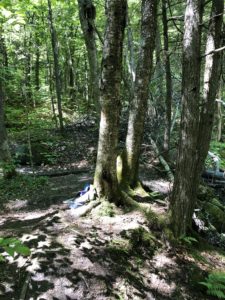 : Both stillness and movement are deepened by enhanced senses of sight, hearing, touch and smell. Changes in air quality over the time spent in practice are palpable; air movement touches the skin as a reminder that the world is always in motion. Bird song accompanies asana and provides easy focus for meditation. (Depending on where you practice you might hear city sounds or water rolling, crashing or babbling.) While plants, soil and trees exude smells of their own, the very scent of freshness is real. Practice yoga, practice meditation, practice balance, practice awareness.
: Both stillness and movement are deepened by enhanced senses of sight, hearing, touch and smell. Changes in air quality over the time spent in practice are palpable; air movement touches the skin as a reminder that the world is always in motion. Bird song accompanies asana and provides easy focus for meditation. (Depending on where you practice you might hear city sounds or water rolling, crashing or babbling.) While plants, soil and trees exude smells of their own, the very scent of freshness is real. Practice yoga, practice meditation, practice balance, practice awareness.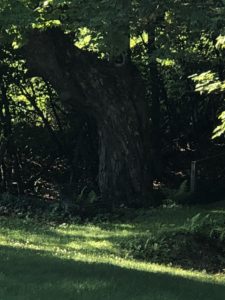
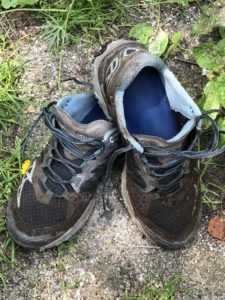
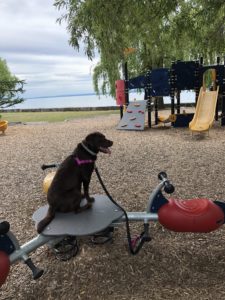
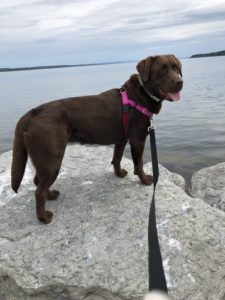 Explore. Explore. Having a pup who needs a lot of exercise is a great benefit! With just a little effort – asking the hotel staff, searching the internet, checking out pamphlets, etc. – I found miles and miles of trail systems, places to take my Lab for a swim or to play with other dogs, even a county fair ground where I could walk her early and late each day and watch the sun and/or moon rise over the nearby lake.
Explore. Explore. Having a pup who needs a lot of exercise is a great benefit! With just a little effort – asking the hotel staff, searching the internet, checking out pamphlets, etc. – I found miles and miles of trail systems, places to take my Lab for a swim or to play with other dogs, even a county fair ground where I could walk her early and late each day and watch the sun and/or moon rise over the nearby lake.
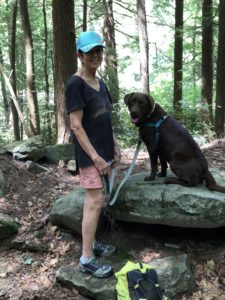
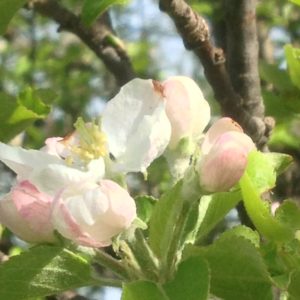
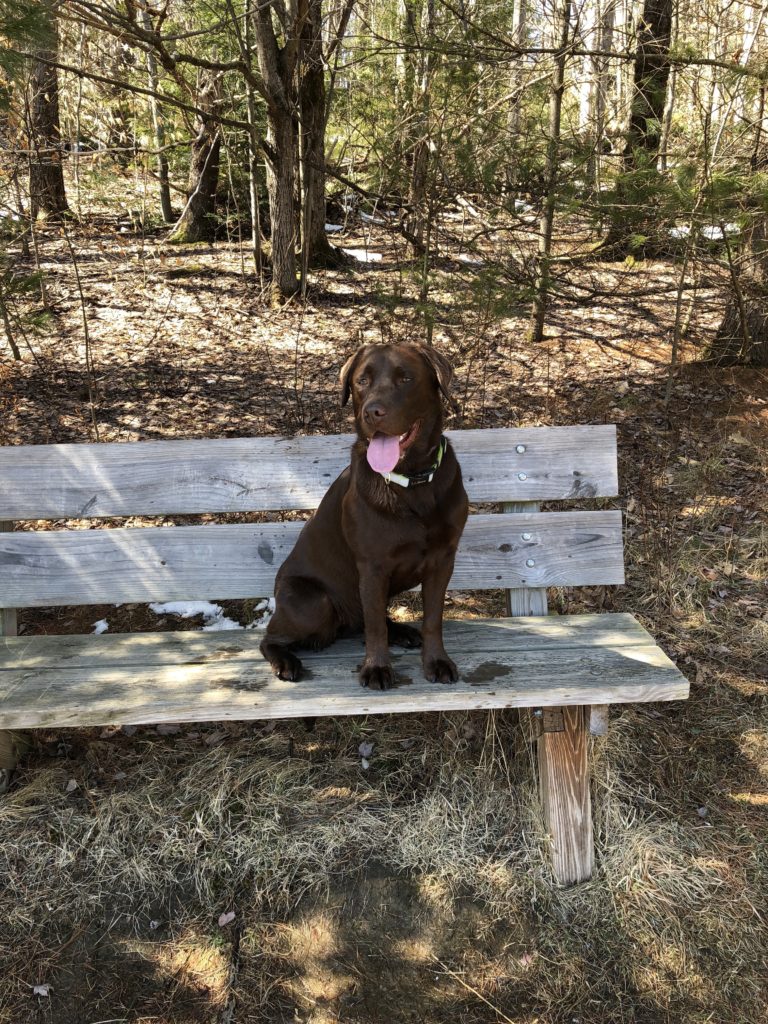

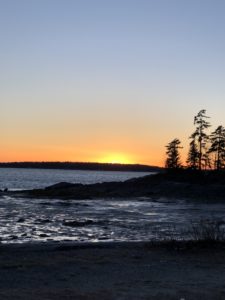
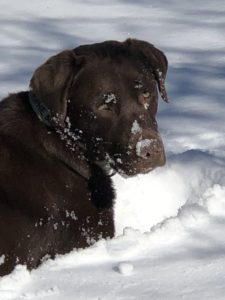

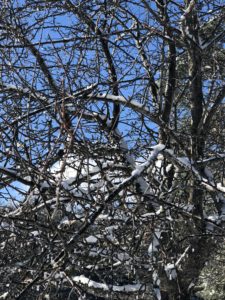 Each January 1st I ask my clients to hone in on a goal or two for the coming year – specific and attainable. This year the stars came out and I was able to post an entire board of wonderful, meaningful and achievable goals.
Each January 1st I ask my clients to hone in on a goal or two for the coming year – specific and attainable. This year the stars came out and I was able to post an entire board of wonderful, meaningful and achievable goals.